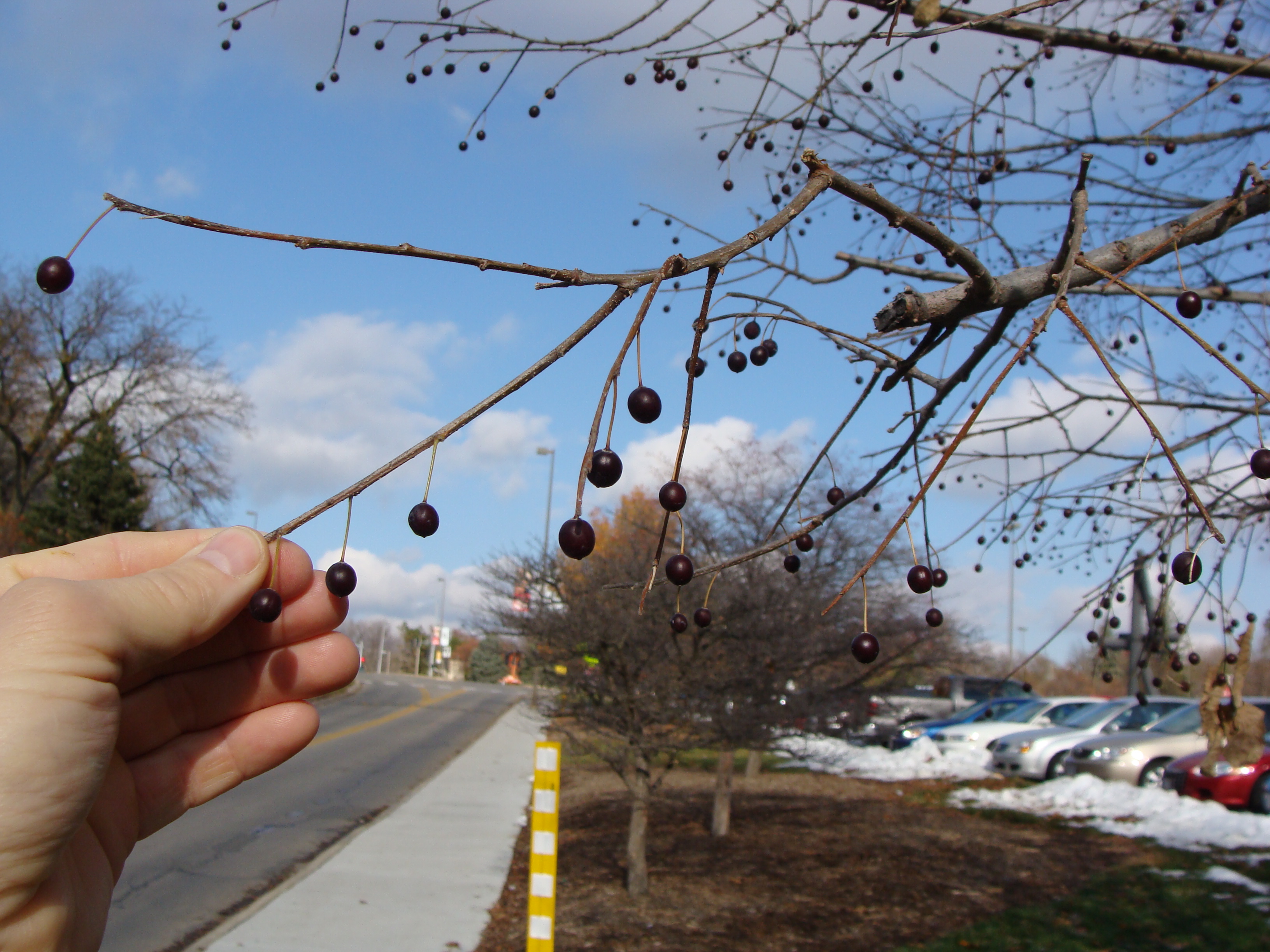Hackberry
Celtis occidentalis , Deciduous
Hackberry may be the king of hard-working trees. It can provide a canopy of shade for decades at a time, and ask for almost nothing in return. Additionally, its deep root system makes common hackberry useful for preventing soil erosion on disturbed sites.

Where To Grow

Size at Maturity
| Tree Height | Tree Spread |
| 50-70' | 50-70' |
Tree Characteristics
The tree is native to woodlands across the region and is distinguished by its bumpy (warty) bark that is often streaked green by lichens on older trees. Hackberry is also known for its lance-shaped leaves that host benign round growths called nipple galls formed by tiny insects. Varies in size from a shrub to a tree in excess of 100 feet tall.
Hackberry grows best on moist alluvial soils, and occurs only as scattered trees mixed with other hardwoods. The leaves are 2 ½ to 4 inches long, and 1 ½ inches wide, oval to lanceshaped, and resemble those of the elm but are more sharply pointed. The bark is grayish brown, with characteristic corky warts or ridges becoming somewhat scaly. The fruit is 1/4 inch to 1/3 inch in diameter, oval to somewhat round, dark red or purple, ripening in September and October, but remaining on the tree for several months.
Wildlife Benefits
Wild turkey, ring-necked pheasant, quail, grouse, lesser prairie chicken, cedar waxwing, robins, and other bird species consume common hackberry fruit, which persists throughout the winter. Small mammals also consume the fruit. Deer will browse common hackberry leaves in the absence of preferred browse species. Common hackberry provides good cover for species such as mule deer, white-tailed deer, upland game birds, small non-game birds, and small mammals.
Additional Considerations
Hackberry is not without problems. Poorly attached branches can be prone to ice-storm splitting and the loss of large limbs can lead to quick and extensive decay within the trunk and large branches.
Interesting Facts
The fruits were also important to Native Americans with many tribes using them to make pemmican.
References
- Tips for planting success
- NRCS Plant Guide
- Developed by Justin Evertson, Kyle Martens, and Denise Wally


